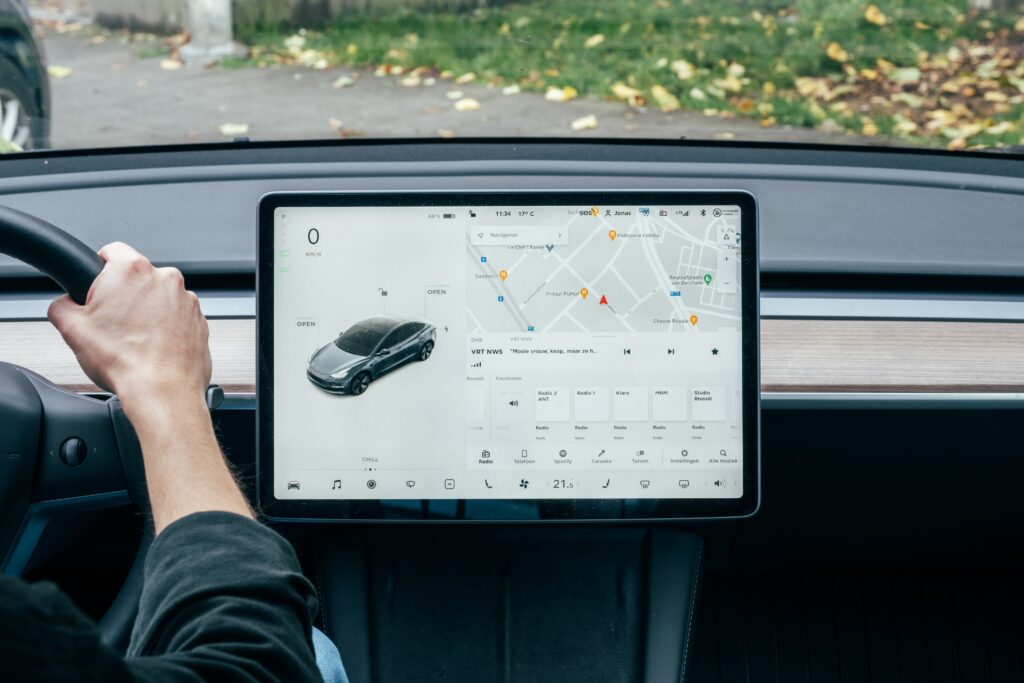Purchasing a car, whether it’s your first or your fifth, can be a daunting task. Our team of car buying pros has created this guide to how to buy a car for one simple reason: buying a car shouldn’t be a miserable experience. We’ve laid out a thorough step-by-step guide to simplify the process for you. It’s 2025, and you have tools that yesterday’s car buyers dreamed about. It’s time to put data to work for you!
👉 Ready to let an expert do it for you? Learn more about CarEdge Concierge, the best way to buy a car hands-down!
1. Know Your Budget and Needs
Imagine if you were paid to do your homework back in school. When it comes to buying a car, it’s a concept that’s not all that far-fetched. When you approach car buying with proper preparation, you’re sure to save more and spend less. Before diving headfirst into the buying process, here’s where you should begin your journey:
Budget For Your Car
This might come across as a no-brainer, but there’s more to setting a budget for car buying than meets the eye. Here’s what you should think about BEFORE shopping for a car.
- Are you planning to pay cash or finance? Familiarize yourself with the pros and cons of each in this guide to paying for a car. You may even consider leasing. Check out the Consumer’s Guide to Negotiating a Car Lease.
- How much money do you have for a down payment, or to pay cash?
- Do you have a trade-in, and how much is it worth? See how much online car buyers will pay. It may be worth it to sell your car rather than trading it in.
- How much can you afford to spend monthly on total transportation expenses? Note: You don’t want to tell salespeople at the dealership that you’re thinking about monthly payments. They can and will use this against you! However, it’s important to consider for your own budgeting.
- Consider additional costs: Auto insurance rates depend on a number of factors, from the type of car and zip code to your credit score to driving record. In the United States, the average monthly premium for auto insurance is $179 per month. Your monthly auto expenses will include your payment if financing, auto insurance, fuel and maintenance. If it helps, create a spreadsheet to add it all up!
- Taxes & Registration: Local charges can add up. Know what your state and local tax rates are. In some states, car taxes are annual and can add up to hundreds or even thousands of dollars for luxury cars. Find out if you’ll have to pay annual property taxes for your car.
- Maintenance: Some vehicles are pricier to keep in tip-top shape. Compare maintenance costs for every car here.
Determine Your Needs vs. Wants

Have you ever asked yourself, what do I actually need? Do you really need a full-size SUV or a $100,000 truck? Have you budgeted for a car? Now’s the time to ponder these questions and more. Remember: the more economical the car, the lower your cost of ownership is likely to be. Maintenance, insurance and taxes are all lower for more affordable cars. Here are a few other things to consider:
- Determine Your Wants: Do you want a new or used car? Do you prefer an electric vehicle, hybrid, plug-in hybrid, or old-fashioned gas power? What are you willing to let go of to save money? These are all worth considering before falling in love with a car on the lot.
- Research Models: Dive deep into the brands and models within your budget range. A great place to start is looking at cars with the most inventory right now for better negotiation leverage. If you’re financing, have a look at this month’s best auto loan rate offers.
- Check Reviews & Ratings: Don’t skip this step! It’s crucial to know about a vehicle’s reliability, safety ratings, depreciation, and how it fares in consumer reviews. CarEdge Comparisons and Consumer Reports are great places to start your research. If you might sell the car in a few years, it’s critical that you consider the cost of depreciation.
2. The Big Decision: New vs. Used

Choosing between new and used can make a big difference in your budget and what you get.
While a brand-new car entices with the allure of cutting-edge technology, pristine interiors, and that new car smell, it also comes with a higher upfront cost. On the other hand, opting for a used car can be easier on the wallet, providing the opportunity to snag a higher-end model at a fraction of its original price. However, used car buyers should tread cautiously, considering factors such as the car’s history, mileage, and any wear and tear. Always get a pre-purchase inspection. You want to know what to expect maintenance-wise! If the seller refuses a pre-purchase inspection, we think you should move on to another deal.
In essence, the choice between new and used boils down to a balance of budgeting and desired features.
Used car prices fluctuate more than new car prices. New car prices generally always rise with each new model year. On the other hand, used car prices undergo serious ups and downs. We track used car prices, and you can see this week’s update here.
3. Qualify For Financing
Financing is possibly the most daunting part, but with the right preparation and resources, it doesn’t have to be. Here’s what you should know BEFORE heading out to buy a car.
Most importantly, print out this auto financing cheat sheet!
- Credit Score: What’s your credit score? What are today’s average rates for your credit score? A higher score often means better interest rates. It’s essential to know where you stand, and if you have time before buying, what you can do to raise your credit score. In general, it’s important to pay all bills on time, and never miss a payment. There are plenty of free ways to monitor your credit these days.
- Debt-to-income ratio: Your debt-to-Income ratio is calculated by dividing all your monthly debt payments by your gross monthly income. Expressed as a percentage, it’s a snapshot of your financial obligations in relation to your earnings. As a general rule, auto lenders cap your debt-to-income ratio to 45% to 50%, but ideally it should be under 35%.
If your debt to income ratio is well above 35%, consider making payments to lower your debts before applying for an auto loan. You’ll qualify for a better rate, and save money on interest.
- Shop for loans the right way: Look into multiple sources of financing, including credit unions, local banks and auto manufacturer offers. For guidance, refer to this auto financing cheat sheet.
- Compare Loan Terms: Understand the length of your loan, monthly payments, and interest. Remember, the longer you have the loan, the more interest you’ll be paying. Generally, it’s best to not exceed 60 month loan terms.
Today’s average auto loan rates range from 9% APR with new cars to 13% for used cars. That adds up quickly, especially for big borrowers with longer loan terms!
If you’re considering a new car, check out the best auto loan rate offers today.
4. Shop Around – The Smart Way

Whether you’re buying new or used, you now have the tools at your fingertips to browse car listings with market insights on your side. Start with CarEdge Car Search, the internet’s first car listings featuring behind-the-scenes market data.
Ready to negotiate with unmatched market data? CarEdge Pro is your DIY car buying toolkit. Use Pro to see local prices, local supply of similar cars, and negotiability factors for every listing. Check out CarEdge Pro to see how you can save.
Once you’ve found multiple sweet deals, it’s time to take it for a test drive!
- Test Drive: Don’t rush it. If you’re serious about buying the car, you should experience it on the highway, in city streets, with the windows up, down, and just about any other condition you will find yourself in. This is your chance to check for red flags (but we always recommend an independent pre-purchase inspection too).
- Here’s what to consider when test-driving a car.
- Ask Questions: Understand every aspect of the deal, from CarFax vehicle history to warranties and optional add-ons like service packages. Expect the salesperson to pitch you products you may not want or need, and it’s up to you to push back against them. A common sales tactic is to tell you the monthly cost, while hiding the total cost of the product. Don’t fall for that!
- Negotiate: Prices can ALWAYS be negotiated. For your complete guide to negotiating car prices, download this FREE car buying cheat sheet!
NEW from CarEdge 👉 Use Dealer Invoice Pricing to Negotiate with Confidence (100% FREE)
5. Finalize the Deal
You’re close to the finish line! Now is NOT the time to rush through paperwork.
- Review everything: Go through the contract and ensure all terms are as agreed. Be on the lookout for sneaky fees, last-minute price changes, and forced add-ons.
- These are the car dealer fees you should never pay!
- Ask for copies of everything. You have the right to a copy of every contract you sign. If you’re agreeing to add-ons, warranties or any other product, be sure to get a printed copy of the product’s contract. Review the auto financing cheat sheet for examples.
- When you’re happy with the deal, it’s time to sign the paperwork: Make it official. If you’re uncertain about any terms, refer to this comprehensive car buying glossary and the car buying cheat sheet. Don’t sign until you understand exactly what you’re paying for!
You’re On Your Way!
Buying a car is no small feat, but with thorough research and the right resources, you can navigate the process with confidence. We’ve got 100% FREE resources to help you begin your journey with the empowerment that comes along with car buying know-how.
Here are the car buying essentials our team created just for you:
The Ultimate Car Buying Checklist
Car Buying Cheat Sheet – Know Exactly What to Say!
How to Finance a Car Like a Pro
The Easiest Way to Buy a Car in 2025
Here at CarEdge, our mission is to take the misery out of car buying for everyone, and to make the entire car buying process more transparent. What’s our plan for accomplishing these lofty goals? We’ve put a growing team of auto industry veterans to work for the good guys, you the car buyer!
With CarEdge Concierge, our pros listen to your needs, and take it from there. We find the perfect fit, negotiate savings on your behalf, present you with the deal, and ship it to your home (if necessary). Learn more about buying with CarEdge. Save at least the cost of our service, or get your money back!













Great tips! I especially appreciated the emphasis on researching the market value before making a purchase. It sounds like following these steps can really streamline the car-buying process. Looking forward to trying them out when I’m ready to buy my next car!